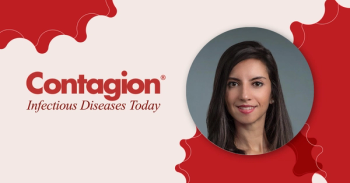
Rural Areas of the United States Continue to Grapple with Outbreaks of HIV
In a story that could be straight out of the 1980s, health officials in the state of West Virginia have stated they are dealing with a major outbreak of HIV infections in the southern part of the state.
In a story that could be straight out of the 1980s, health officials in the state of West Virginia have stated they are dealing with a major outbreak of HIV infections in the southern part of the state.
According to a report from the local newspaper, the
State officials first noticed an increase in HIV infections in the southern portion of the state in 2015, when 68 cases were reported. Another increase was observed in August 2017. This spurred officials to step up surveillance and identify who was infected, according to the reports. After identification, officials focused on linking those infected with care.
According to the Centers for Disease Control and Prevention (
As of the week of November 6, 2017, a total of 60 new cases were reported across the state. The latest
This is not the first time in recent years that a rural area of a US state has seen an outbreak of HIV. In 2016, Contagion®
To stop more outbreaks from happening because of needle-sharing, many states have set up what have been called “harm-reduction programs,” which include needle-exchange services.
Outbreaks in rural areas may just be the tip of the iceberg when it comes to new fears on HIV. This is because, according to a new report, the virus is becoming increasingly resistant to the antiretroviral (ART) medications that are vital to treating (and preventing) the infection. Chris Beyrer, MD, professor of epidemiology with the Johns Hopkins Bloomberg School of Public Health in Baltimore, Maryland, and lead author on the report stated in a
About half of the world’s population of individuals with HIV (19.5 million) are currently being treated with ART, according to the press release.
This new report on increasing resistance will certainly put a major damper on hopes that the world will be able to hit the United Nations’ and World Health Organization’s
The main driver in this resistance is a familiar one: lack of adherence to the [ART] medication regimen, which enables the virus to mutate and develop resistance to the drugs.
What can be done?
“The research team advocates placing more focus on prevention by hastening the development of an effective vaccine and by ratcheting up the use of Truvada, the HIV prevention regimen also known as PrEP,” according to the press release. PrEP has been found to curb the risk of becoming infected with HIV up to 90%. In addition, the release states that Dr. Beyrer recommends “those already infected, but not yet treated, should be given access to newer types of ART cocktails, including drugs such as
The bottom line is that the health care community needs to remain vigilant in surveillance of HIV infections, connecting individuals at-risk and infected to care as soon as possible, and conducting ongoing research on the virus and effective medication to treat and prevent infection.
Newsletter
Stay ahead of emerging infectious disease threats with expert insights and breaking research. Subscribe now to get updates delivered straight to your inbox.






















































































































































































































































































